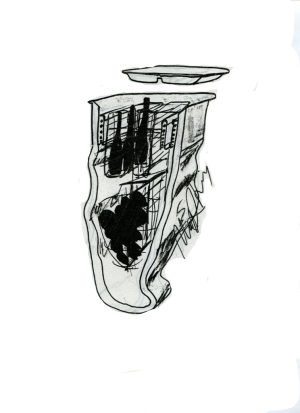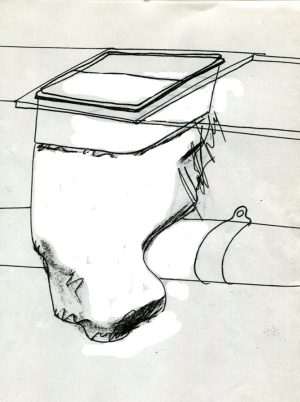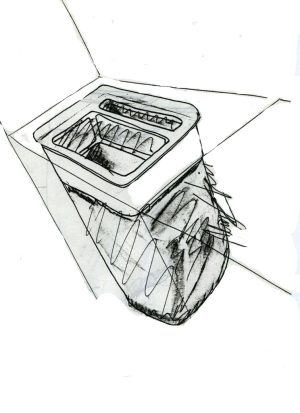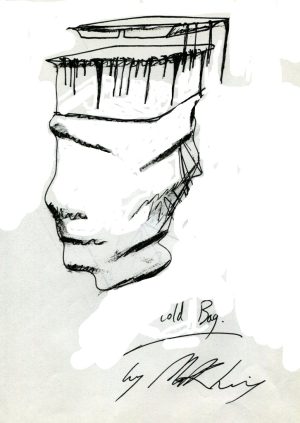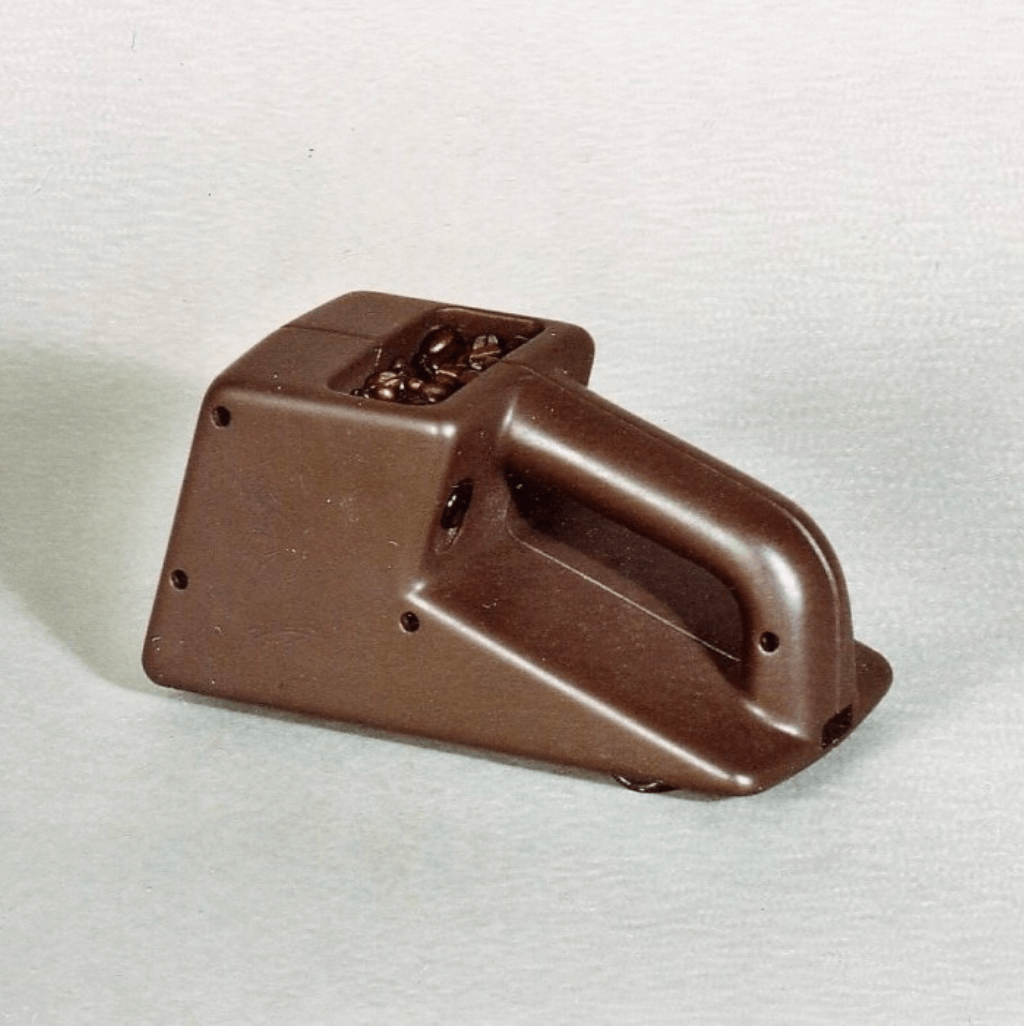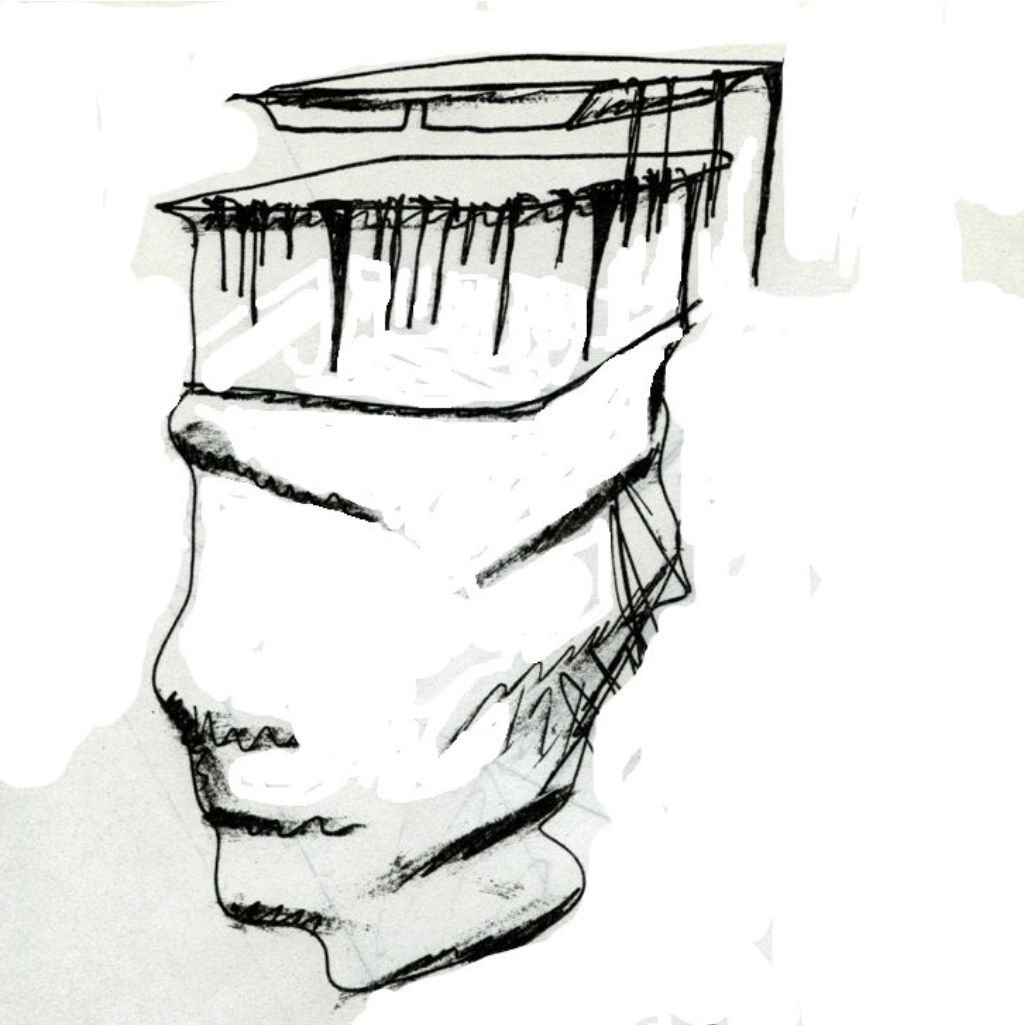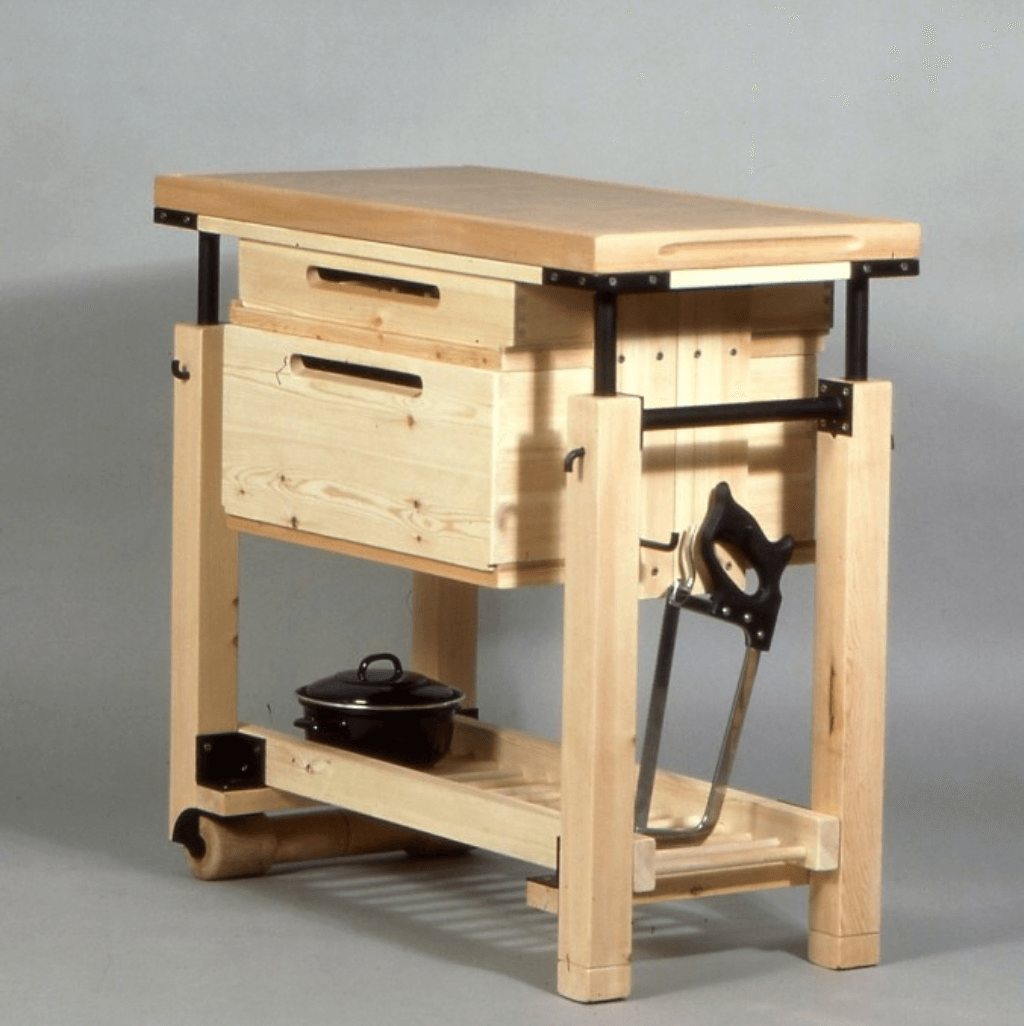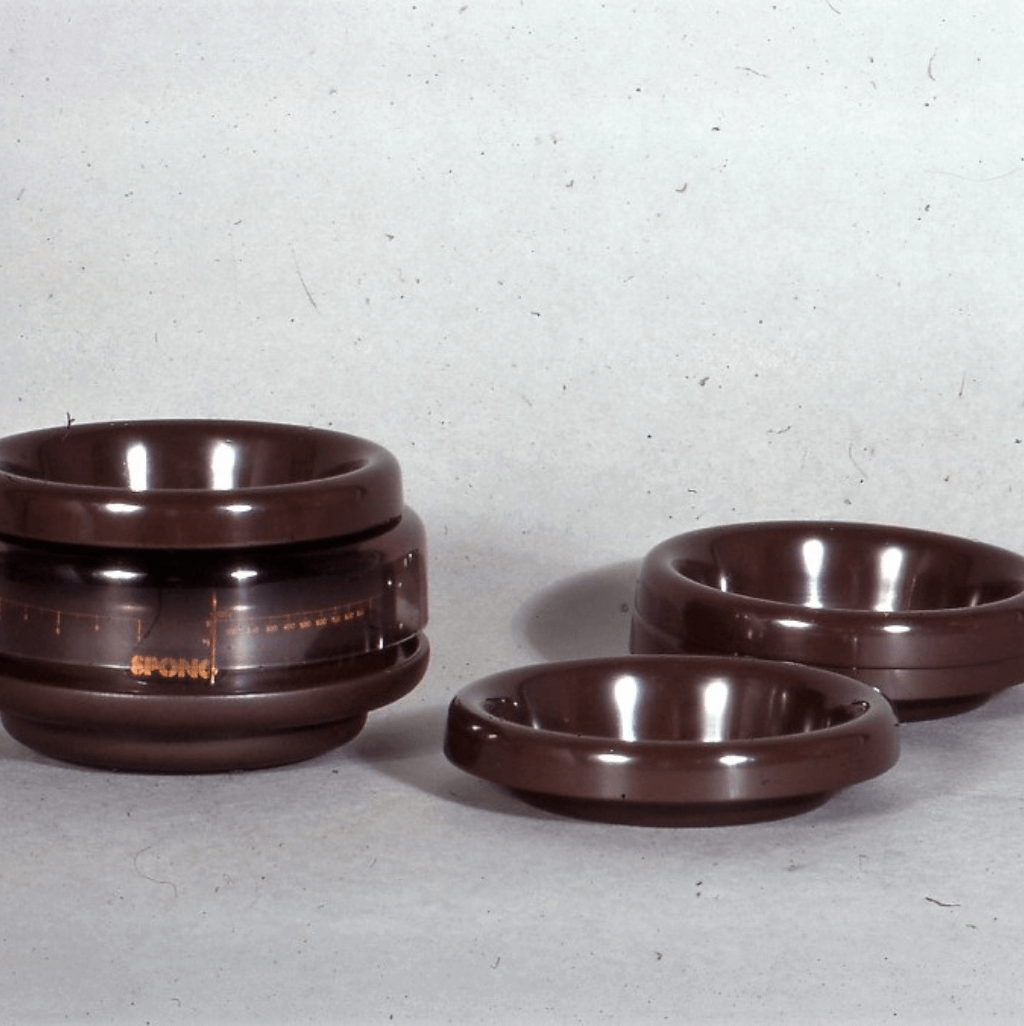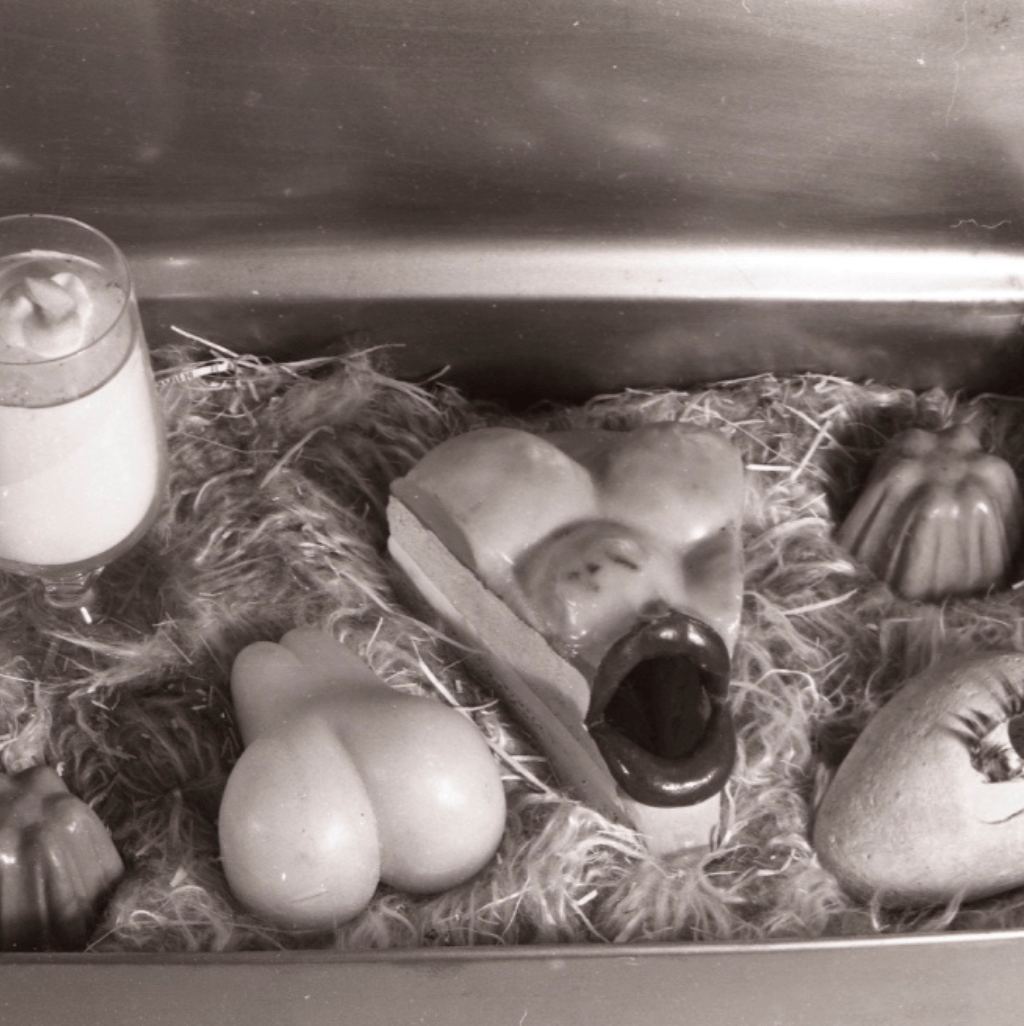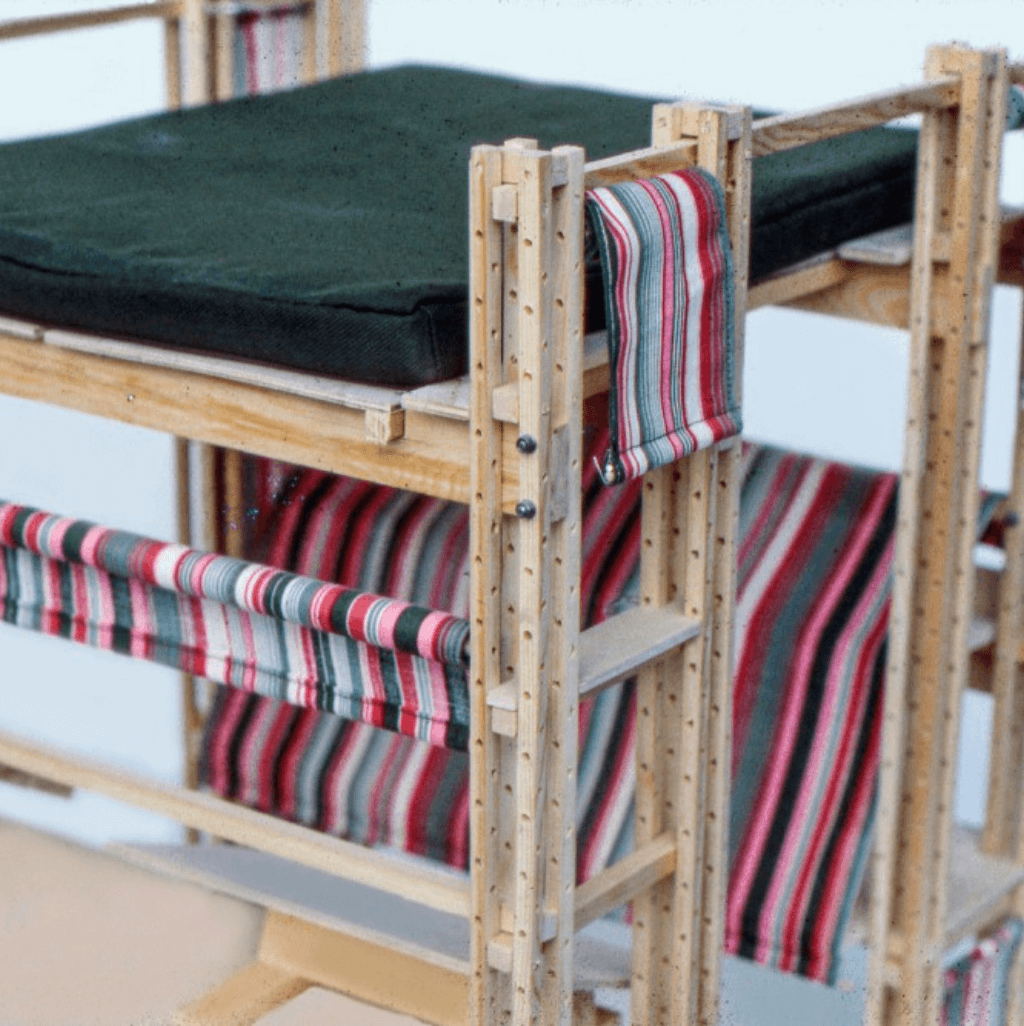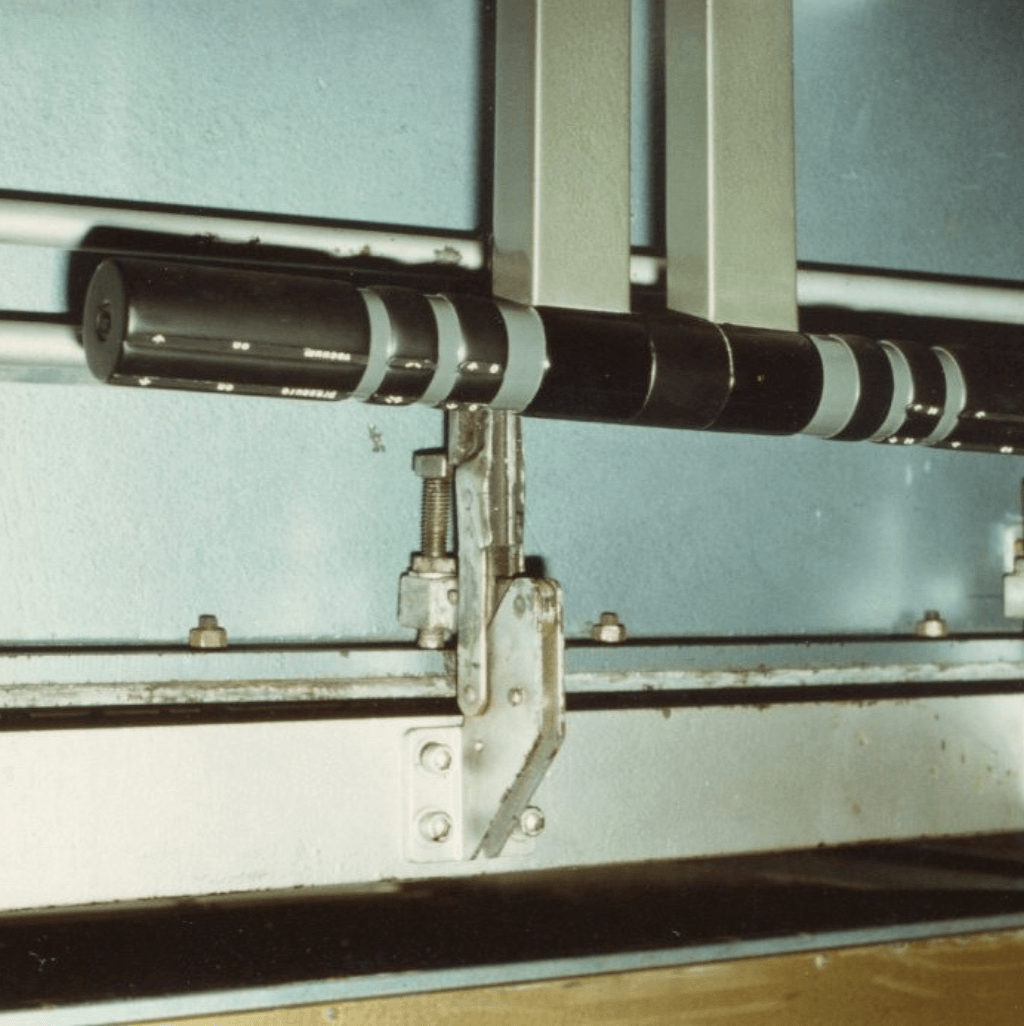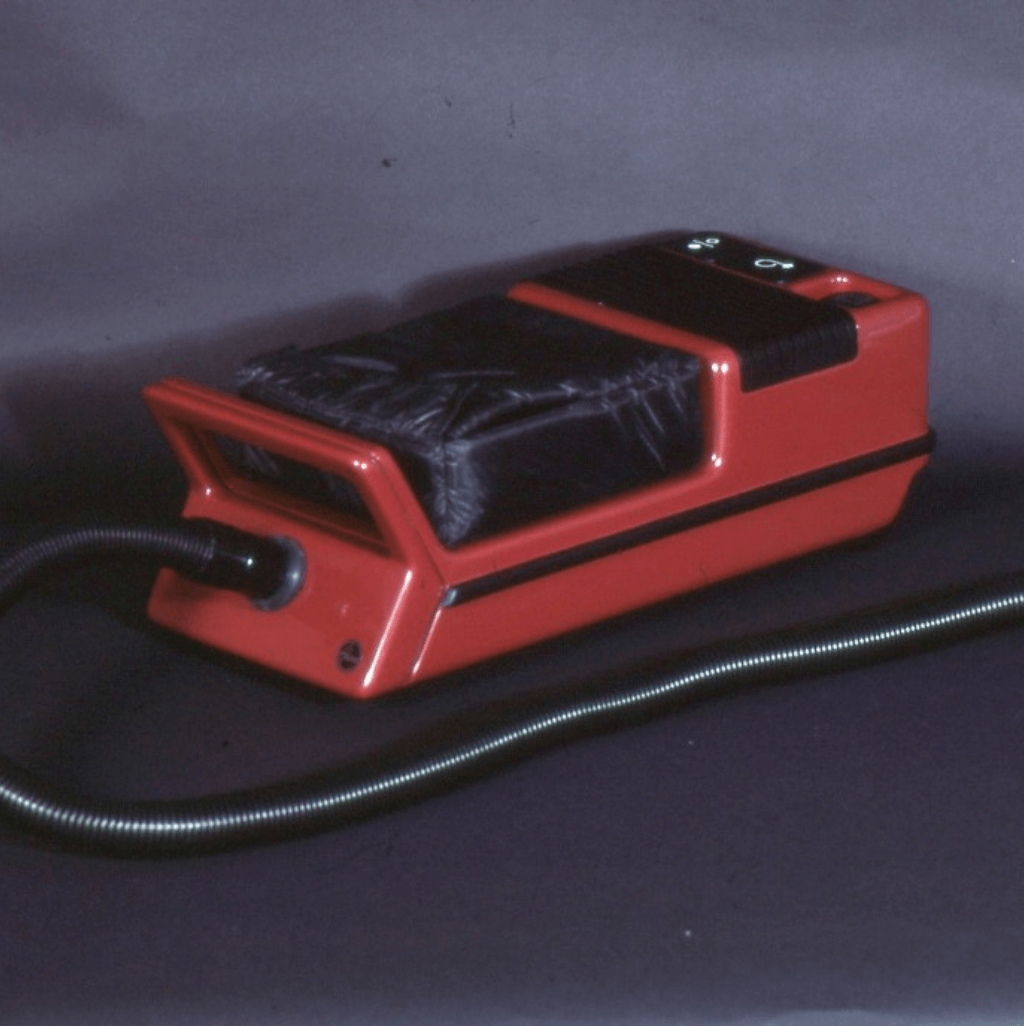Cold Storage – Mark Lewis Design, 1982
Cold Rucksack/Cold Bag/Refrigerated Bag/Freezer Bag
Application:
The storage of items perishable in an otherwise uncontrollable atmospheric temperature.
Method:
By laminated ‘closed cell’ expanded polythene with reinforced polythene sheet.
Process:
Vacuum formed into sacks
Variations:
The sacks can be collared with formed polythene sheet or adjoined to molded polythene components. Both applications to the laminate becoming integral to the bags structure. This process would enable the production of ‘cold rucksacks’ for short term transit of perishables by foot; ‘cold bags’ for short term transit of perishables by vehicle; ‘refrigerated bags’ and ‘freezer bags’ for permanent location in vessels or vehicles facilitating storage in areas otherwise unsuited for rigid box type refrigerators.
Essence:
The bag’s wall structure of laminated ‘closed cell’ polythene and toughened polythene sheet retains flexibility without the structure or thickness altering and thereby depreciating its inherent insulating qualities. The vacuum-formed bag will protect the goods inside and enable its permanent situation in awkward or cramped spaces, resist water seepage and float.
Example:
The refrigerated bag, as illustrated and specified by the accompanying drawings represents the method of production and format of application of laminated ‘closed cell’ expanded polythene and is to formulate the basis for further research.
Research:
It is necessary to embark on a program of prototyping the bag. This will involve experiments with laminating and vacuum forming the laminate and the techniques adjoining the different densities of polythene. Having established a working method then the peripheral collar containing the evaporator coils and the structures for supporting the bag in the ‘rucksack’ and ‘cold bag’ applications can be more intelligently formulated.
Redesign:
Once accurate criteria has been established the determining of form can be applied considering in detail sizes, colours, shapes, materials, production methods, production runs, packaging and marketing. These aspects all under the heading of redesign are the factors which must be considered at the beginning of the project in order that a realistic perception of the project can determine its fate at the outset of any venture.
Preliminary Research:
Confirmation from the professional bodies in the project will be sought, to assess the viability of carrying on further. Consultation will be sought with professional plastics feasibility units, refrigeration manufacturers and large leisure good companies. This will inexpensively test the reception of such items in the market place and determine the possibility of the production methods working.
Insulated Bag
The invention related to an insulated bag.
According to the invention, an insulated bag comprises an insulation envelope for articles to be kept cool or refrigerated or warm or heated, wherein the envelope is made from at least one layer of pliable expanded closed call polymer, such as polythene, laminated to a tear resistant protective sheet defining the inner and outer envelope surfaces.
In one form of the invention the envelope is so pliable that it can be deformed to fit into confined or awkward spaces and bend around projections. This will make the insulated bag particularly suitable for use in vehicles such as long-distance lorries, vessels such as yachts and aircraft. It is also useful for an insulated bag to be work on, for instance, a hiker’s back, because it assumes the advantages of any bag that can be easily manhandled. Of course, means are provided for closing a mouth of the envelope. Such means are not critical but should be provide for a reasonable seal, so that the bag’s contents retain their intended temperature for as long as possible. The kinds of enclosures envisaged are a zip fastener having its strings welded, or adhere to the protective sheet, press studs, buckles, or rubber toggles, are also likely methods that may be used.
In another form of the invention the envelope is still pliable, but it is provided with a tougher, thicker or reinforced protective sheet at or near the mouth of the bag to provide somewhat more rigid seating for plug type closure. The tougher construction at the mouth also serves to facilitate the mounting of a smaller refrigeration or heating unit and the suspension of a basket for holding the articles to be stored.
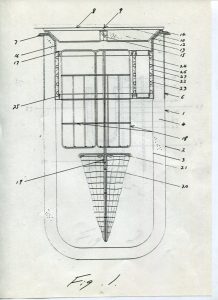

In the drawings, the envelope (1) is made of a pliable layer or core (4) of expanded polyethylene laminated to an outer sheet (2) and inner sheet (3) of non-expanded polyethylene. The sheets (2) and (3) are thicker or reinforced to define a less pliable collar (6). At the upper edge of the sheets (2) and (3) are welded or otherwise secured together to form a flange (7). The bag is closed by a plug type lid (8) of polypropylene. The lid folds on itself by way of polypropylene hinge (9). The surface of the lid (10) facilitates a working area if the cool bag is suspended from a counter top by way of the flange (7). The inner structure of the lid (12) contains an expanded polyethylene core (13) and follows the contours of the collar (6) to implement a secure plugging of the envelope (1). Seals (14) and (15) of expanded polyethylene are fixed to the inner structure of the lid (12) to increase the effectiveness of the plug type lid (8). A formed additional layer of less pliable non-expanded polyethylene (16) is fixed to and follows the same contours of the collar (6) to facilitate a shoulder (17) from which is suspended; the storage baskets (18) and (19) of coated wire. Baskets (18) are rigid to contain fragile items in the upper part of the envelope. Baskets (19) have suspended from their frame (21), an expandable net (20) for the storage of less fragile items and allows for distortion that night occur in the lower part of the envelope. The layer (16) also houses the evaporator coil (22), retaining plates (23) which are fixed by foil tape (24) and rivets (25). To ensure an effective housing of the evaporator coil it is enveloped by a heat conducting sealer (26) and to insulate further closed call polyethylene (27) is situated in the voids between the coils (22).
The concentrated circuit of evaporator tube (22) in one half of the refrigerated area (28) is to facilitate the making of ice. Beneath this area (28) is situated the dryer (29) and the thermostat control (30).


